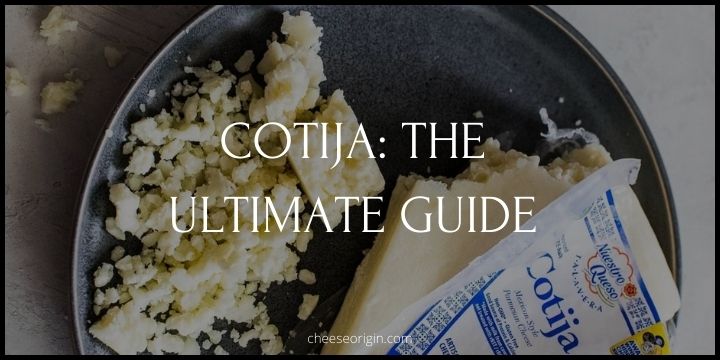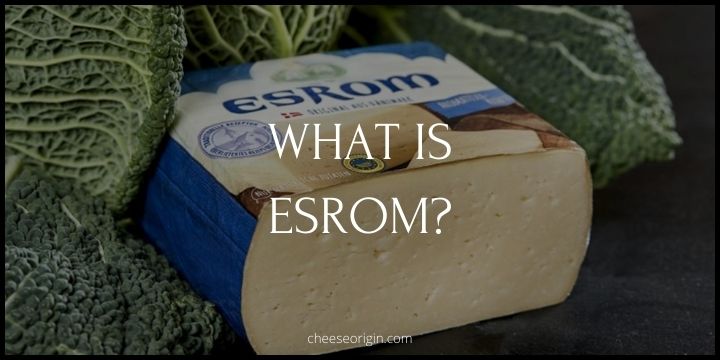What is Taleggio? Unveiling Italy’s Pungent Treasure
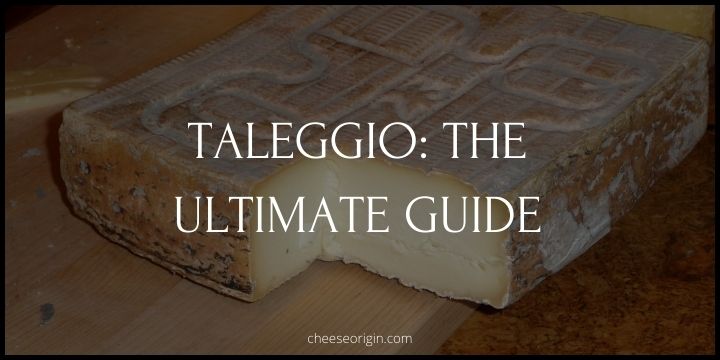
Welcome to our culinary journey into the heart of Italy’s cheese-making tradition, as we delve deep into the world of Taleggio.
This cheese, with its rich history, distinctive aroma, and creamy texture, has captivated palates for centuries. Whether you’re a seasoned cheese connoisseur or a curious foodie, this guide will take you on an unforgettable exploration of this Lombardy region treasure.
We’ll uncover the secret behind its unique taste, learn about its production process, and even share some delectable recipes that showcase its versatility.
Quick Facts About Taleggio
| Quick Facts | Description |
|---|---|
| Origin | Italy |
| Milk Source | Cow’s milk |
| Texture | Semi-soft, creamy |
| Flavor | Mild, tangy, slightly sweet |
| Color | Pale yellow |
| Aging Process | Usually aged for 6 to 10 weeks |
| Uses | Ideal for melting on pizzas, in risotto, or eaten alone |
| Production Process | The cheese is washed with seawater once a week to prevent mold growth and enhance flavor |
What is Taleggio?
Taleggio is a semi-soft, washed rind, smear-ripened cheese that originated in Italy. It is named after the caves of Val Taleggio, which are used to age the cheese.
The cheese has a thin crust and a strong aroma, but its flavor is comparatively mild with a fruity tang. It’s slightly sweet and melts well, making it a popular choice for a variety of dishes, including risotto and polenta.
Taleggio is made from cow’s milk, and its texture is creamy. The cheese is typically aged for 6 to 10 weeks. During the aging process, the cheese is washed with seawater once a week to prevent mold growth and enhance its flavor.
It’s considered one of the oldest soft cheeses and is traditionally produced in the autumn and winter months when cows are brought down from alpine pastures.
What is Taleggio cheese similar to?
Taleggio cheese is often compared to other washed-rind cheeses due to its pungent aroma and creamy texture. Some of the cheeses that are similar to Taleggio include:
- Brie: Known for its creamy, buttery flavor and soft, edible rind. Although Brie is typically milder in taste than Taleggio, it shares a similar texture.
- Camembert: This French cheese also has a soft, creamy interior with a bloomy, edible rind. It’s slightly more intense in flavor than Brie but still less pungent than Taleggio.
- Fontina: An Italian cheese from the Aosta Valley, Fontina has a similar texture to Taleggio but a much milder flavor.
- Robiola: Another Italian cheese, Robiola can be made from different types of milk just like Taleggio, and it has a similar creamy texture.
- Limburger: This Belgian-German cheese is famous for its strong smell, much like Taleggio. The flavor of Limburger can also be quite bold, making it a good match for the robustness of Taleggio.
While these cheeses share similarities with Taleggio, each one has its own unique characteristics that make them special in their own ways.
Is Taleggio similar to Brie?
Yes, Taleggio and Brie are somewhat similar, particularly in their soft textures and creamy flavors. Both cheeses have a rind that can be eaten, but there are key differences.
| Characteristics | Taleggio | Brie |
|---|---|---|
| Country of Origin | Italy | France |
| Aroma | Strong, pungent | Mild, subtle |
| Flavor | Tangy but mild, becomes more pronounced with age | Buttery, creamy, mild, can vary with specific variety and aging |
| Texture | Soft, creamy, a bit denser | Soft, creamy, more spreadable |
| Rind | Washed rind, edible | Bloomy rind, edible |
| Pairings | Pairs well with Italian wines, fruits, and crusty bread | Pairs well with Champagne, fruits, and baguette |
Taleggio:

Taleggio, from Italy, has a stronger, more pungent aroma than Brie due to its washed rind. The flavor is tangy but mild, becoming more pronounced as the cheese ages.
Brie:
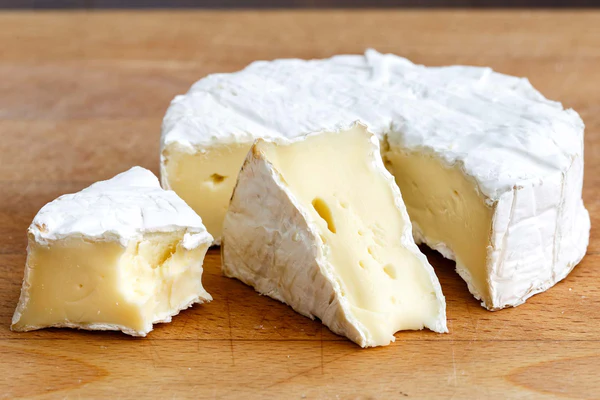
Brie, on the other hand, hails from France and is known for its bloomy rind which imparts a subtle earthy flavor. Brie’s flavor profile is generally described as buttery, creamy, and mild, but it can vary depending on the specific variety and how long it has been aged.
In terms of texture, both are creamy and spreadable, but Taleggio tends to be a bit denser than Brie. Despite these differences, if you enjoy one, you’re likely to enjoy the other as well.
>> Click here to read our in-depth guide on Brie
What is Taleggio used for?
Taleggio is a versatile Italian cheese with a variety of culinary uses. Here are some ways it’s commonly used:
- Cheese Boards: Taleggio is a great addition to any cheese board due to its unique flavor profile. It pairs well with fruits like grapes and apples, as well as with honey or fig jam.
- Melting: Taleggio melts beautifully, making it perfect for use in dishes like risotto, pasta, or on a gourmet pizza.
- Grilled Cheese Sandwiches: The creamy texture and distinct flavor of Taleggio can elevate a simple grilled cheese sandwich.
- Baking: Taleggio can be baked into breads or pastries for a savory treat.
- Sauces: The cheese can be melted down into a sauce for dishes like polenta, gnocchi, or vegetables.
- Pairing with Wine: Taleggio pairs wonderfully with a variety of wines, particularly Italian ones such as Nebbiolo or Valpolicella.
The strong aroma of Taleggio can intensify with age, but its flavor remains relatively mild, making it a great addition to many dishes.
How do Italians eat Taleggio?
Italians enjoy Taleggio in a variety of ways, reflecting its versatility and rich flavor:
- Cheese and Bread: Italians often eat Taleggio with bread or crackers, making it a perfect accompaniment for any type of crusty bread. Some even like to savor it with bruschetta.
- Cooking: Taleggio is frequently used in many traditional Italian dishes. It melts beautifully, which makes it an excellent ingredient in recipes such as risotto, polenta, and pizza.
- Antipasto: Taleggio is often included in antipasto, a traditional Italian starter course. It can be paired with autumnal fruits such as apples and pears, providing a sweet and sour contrast.
- Dessert: Italians sometimes consume Taleggio as a dessert cheese, paired with fruits like grapes, berries, pears, and apples.
- Wine Pairing: Like many Italian cheeses, Taleggio pairs well with wine, particularly reds.
The rind of Taleggio is edible and offers a contrasting texture to the creamy interior of the cheese.
Also read: What Fruit Goes on a Charcuterie Board?
Is Taleggio a strong cheese?
Taleggio is often described as a cheese with a complex profile – it has a strong, pungent aroma but its flavor is comparatively mild with an unusual fruity tang. This means that while it might smell strong, its taste doesn’t overpower other flavors in a dish.
It is rich and tasty, like many other soft cheeses from Italy, but its subtle flavor won’t overpower you. It’s a combination of robust yet mellow flavors, making it a unique and versatile cheese.
Taleggio tasting notes
- Aroma: Strong and pungent, with a distinctive earthy smell.
- Flavor: Mild and creamy with a slight fruity tang. The flavor becomes more pronounced with age but remains relatively mellow.
- Texture: Semi-soft, creamy, and slightly crumbly. The cheese has a sticky texture due to its washed rind.
- Color: Pale yellow, with a thin pinkish-grey rind that is edible.
- Aftertaste: Lingering, with hints of nuts and fruit.
- Pairings: Pairs well with Italian red wines, crusty bread, fruits like apples and pears, and can also be used in various recipes due to its excellent melting properties.
Also read: 11 Best Crackers that Pair Well with Cheese
Is Taleggio cheese healthy?
Taleggio cheese can be part of a balanced diet, offering several nutritional benefits. Here are some key points to consider:
- Calories: Taleggio cheese is relatively high in calories, providing approximately 315 calories per 100 grams.
- Protein and Calcium: It’s a good source of protein and calcium, which are essential for muscle function and bone health.
- Other Nutrients: Taleggio also contains other important nutrients like magnesium and phosphorus.
- Fat and Sodium: However, it is high in fat and sodium, so it should be consumed in moderation.
- Aroma and Mold: Despite its strong aroma, Taleggio is safe to eat. Some Taleggio cheeses have more surface mold than others, but this is not a cause for concern.
It’s worth noting that while some research suggests that full-fat cheese doesn’t necessarily negatively impact heart health, it’s still important to consume it in moderation as part of a balanced diet.
Taleggio cheese nutrition facts
| Nutrient | Amount per 1 oz (28.35g) |
|---|---|
| Calories | 80-90 |
| Total Fat | 7g |
| Saturated Fat | 5g |
| Trans Fat | 0g |
| Cholesterol | 22mg |
| Sodium | 325mg |
| Total Carbohydrates | 0-1g |
| Dietary Fiber | 0g |
| Sugars | 0g |
| Protein | 5g |
7 best Taleggio substitutes
| Cheese | Country | Flavor | Texture |
|---|---|---|---|
| Brie | France | Creamy, Soft | Soft |
| Fontina | Italy | Mild, Slightly Nutty | Semi-soft |
| Havarti | Denmark | Buttery, Mild | Semi-soft |
| Gruyere | Switzerland | Sweet, Slightly Salty | Hard |
| Bel Paese | Italy | Soft, Mild | Semi-soft |
| Limburger | Belgium/Germany | Pronounced Smell | Very Soft |
| Robiola | Italy | Smooth, Creamy | Soft to Semi-soft |
What goes well with Taleggio cheese?
Food that goes well with Taleggio cheese
| Food Category | Specific Foods |
|---|---|
| Fruits | Pears, Apples, Figs |
| Breads | Baguette, Sourdough, Ciabatta |
| Meats | Prosciutto, Salami, Mortadella |
| Nuts | Walnuts, Almonds, Hazelnuts |
| Vegetables | Arugula, Radicchio, Endive |
| Jams & Spreads | Fig Jam, Apricot Preserve |
| Condiments | Honey, Balsamic Glaze |
| Pastas | Ravioli, Fettuccine, Gnocchi |
Beverage that goes well with Taleggio cheese
| Beverage Category | Specific Beverages |
|---|---|
| Wine | Chardonnay, Pinot Grigio, Barolo |
| Beer | Belgian Ale, Stout, Pilsner |
| Spirits | Whiskey, Brandy |
| Non-alcoholic | Sparkling Water, Apple Cider |
Also read: A Comprehensive Guide to Enjoying Cheese Platter with Wine
The history of Taleggio
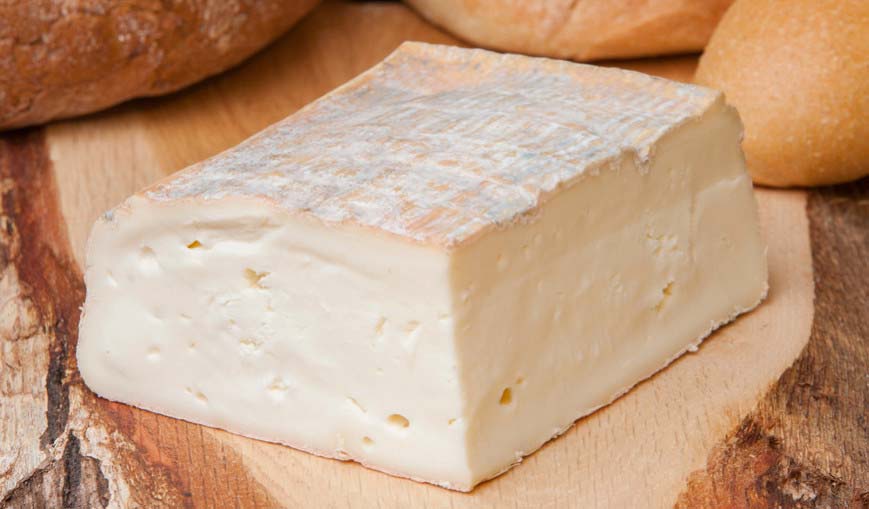
Taleggio is an Italian cheese named after the caves of Val Taleggio. It’s one of the oldest soft cheeses, produced in autumn and winter. During cheese making, the acidic milk is brought to the lab and kept on the wood shelves in the chambers as well as in caves according to tradition. In order to prevent mold infestation, the cheese is washed with seawater once a week. The process takes approximately 40 days.
The cheese has been known since Roman times, mentioned in the works of Pliny the Elder. However, it was not named Taleggio until the 9th century. Originally it was called “stracchino“, derived from “stracca”, which means tired in Italian. This name was used because the cheese was made by the tired cows coming down from the alpine pastures in the autumn.
In the 20th century, production of Taleggio increased significantly. In 1988, the cheese received a Protected Designation of Origin (PDO) status from the European Union, ensuring that only cheese produced in specific regions of Italy using traditional methods can be called Taleggio. Today, it remains a popular cheese, appreciated for its strong aroma and delicate flavor.
Frequently Asked Questions
1. Can you eat Taleggio without cooking it?
Yes, Taleggio cheese can be eaten without cooking. It’s often served at room temperature on cheese boards, paired with fruits, nuts, and wines.
2. Can Taleggio go bad?
Yes, like all cheeses, Taleggio can go bad. There are a few signs that your Taleggio cheese may have spoiled:
- Off smell: Taleggio has a strong aroma, but if it smells sour or unpleasantly strong, it may be spoiled.
- Change in color: If the cheese has become significantly darker or developed patches of mold that aren’t typical for Taleggio (which can have a natural white or pale pink mold on its rind), it might be bad.
- Altered texture: If the cheese is excessively hard, dry, or slimy, it’s likely spoiled.
- Bad taste: If the flavor is off or sour, the cheese is probably bad.
To keep Taleggio fresh, it should be stored in the refrigerator, wrapped in parchment paper or in a cheese bag, and consumed within a few weeks of purchase. If you’re unsure whether your cheese is safe to eat, it’s best to err on the side of caution and discard it.
Also read: What’s the Best Way to Store Cheese?
3. How do you cut taleggio cheese?
Here are some steps to guide you:
- Prepare Your Tools: You’ll need a sharp cheese knife. Some people prefer to use a cheese wire, which can make cleaner cuts through soft cheeses.
- Chill the Cheese: If the cheese is very soft, you might want to refrigerate it for a bit before cutting. This isn’t necessary, but it can make the cheese easier to handle.
- Cut the Cheese: Cut the Taleggio into thin slices starting from the shortest side of the cheese. If the cheese is in a square shape, cut it into strips and then into smaller pieces if desired.
- Serve: Taleggio can be served at room temperature. Once you’ve cut it, let it sit out for a little while before serving to allow the flavors to fully develop.
4. Is Taleggio made from cows or goats?
Taleggio cheese is traditionally made from whole cow’s milk. While it can be made with raw or pasteurized milk, varieties made with unpasteurized milk are not approved by the United States Food and Drug Administration. The milk used for Taleggio cheese often comes from cows that have returned from their summer pastures and are consuming baled hay and fodder.
5. How to pronounce Taleggio?
Its pronunciation in English is typically “Tah-LEH-jee-oh”. The emphasis is on the second syllable. In Italian, it would be pronounced similarly, but with a softer ‘g’.
6. Can you eat the rind of Taleggio?
Yes, the rind of Taleggio cheese is edible. However, it has a strong flavor that some people might find overpowering. The rind is washed with a brine solution during the aging process which gives it a distinct taste.
If you find the flavor too strong, you can choose to remove the rind before eating. It’s all a matter of personal preference.
7. Is Taleggio cheese spicy?
No, Taleggio cheese is not typically described as spicy. It’s known for its strong, pungent aroma and its flavor is generally mild, creamy, and a bit fruity. While it has a robust flavor profile, spiciness is not a characteristic attribute of Taleggio cheese.
Also read:
- Discovering Panela: A Guide to Mexico’s Versatile Cheese
- All About Swiss Cheese: A Comprehensive Guide
- Utz Cheese Balls: The Ultimate Guide (Taste the Tradition)
- Cotswold Cheese: A Taste of England’s Finest
- The Ultimate Guide to Hoop Cheese: A Southern Delight
- Cheese Curds: The Unsung Heroes of the Dairy World
- Fior di Latte: A Comprehensive Guide to Italy’s Creamy Delight



